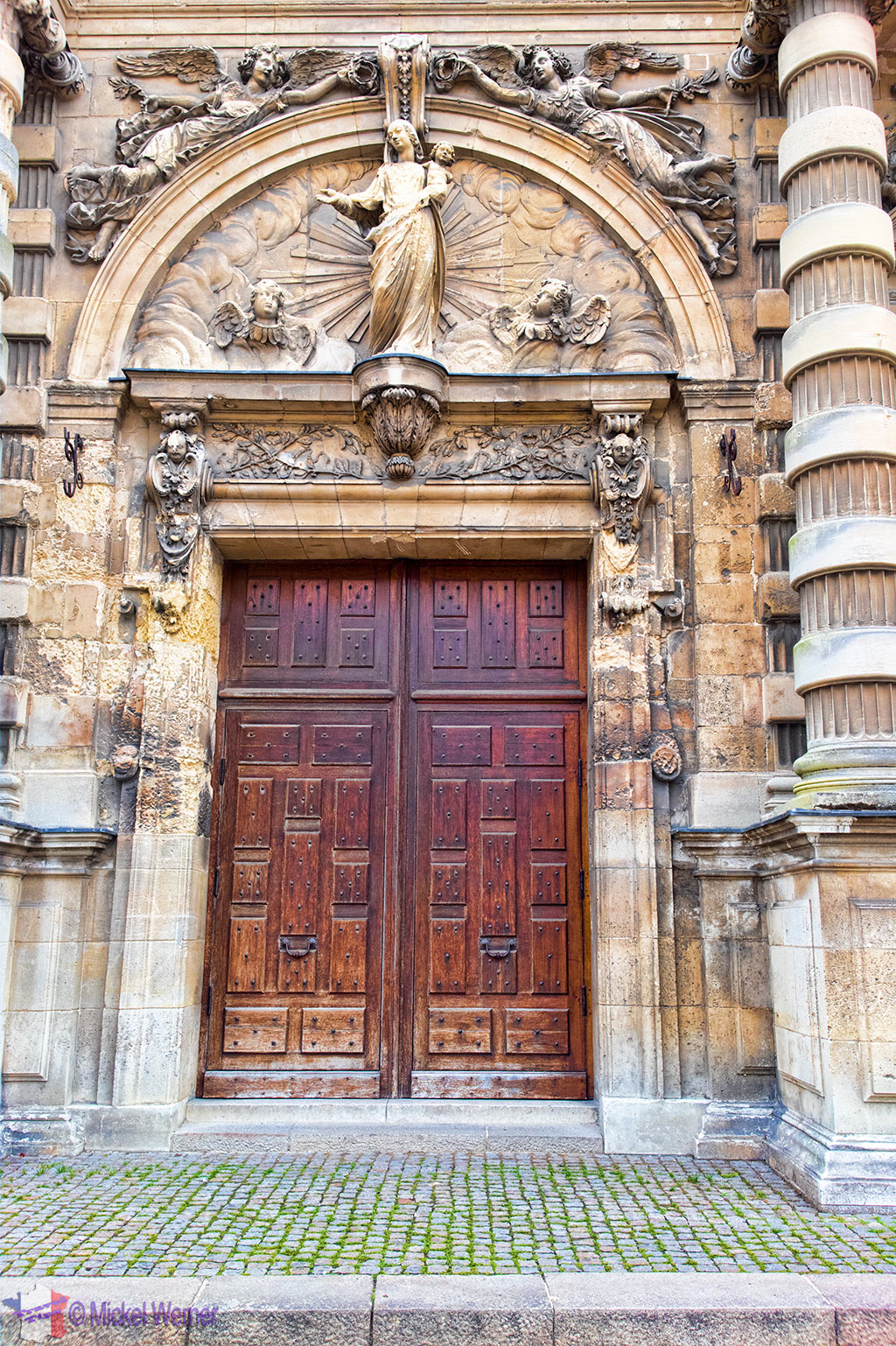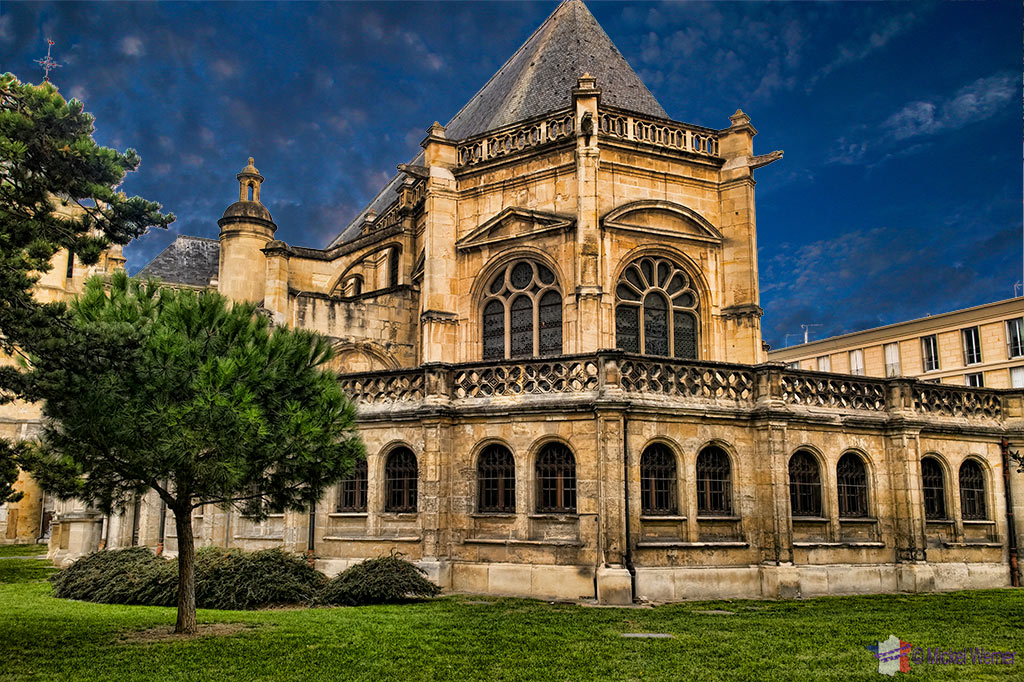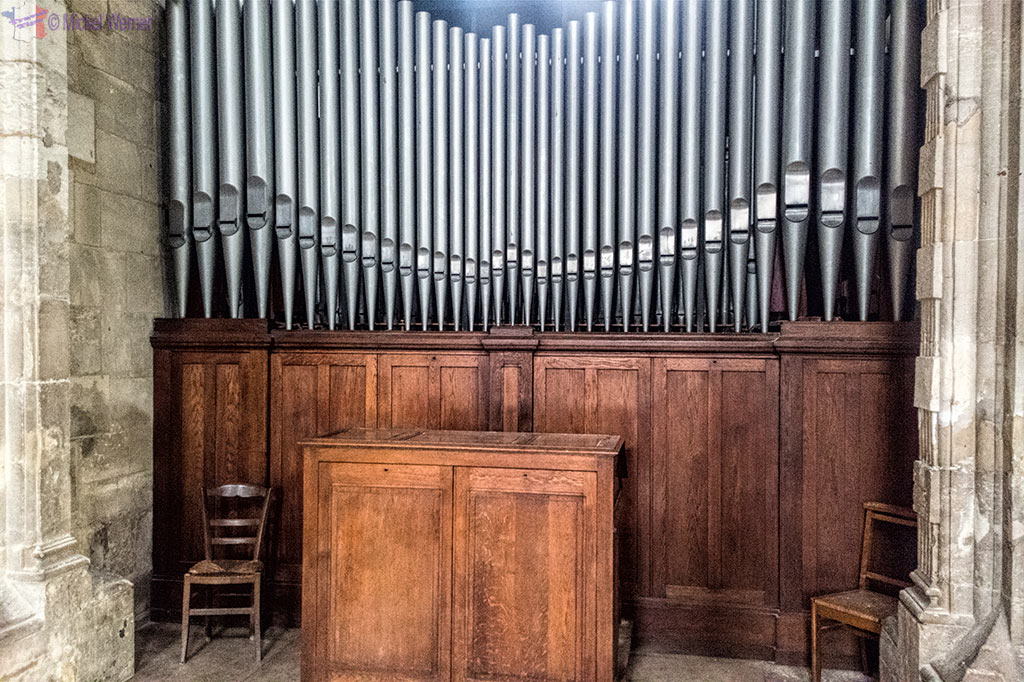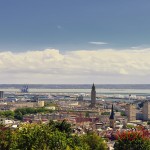The recently (in 1974) appointed cathedral of Le Havre, the “Cathedrale Notre-Dame du Havre“, is nothing to write home about. Outside it is interesting, but inside it’s pretty drab. Its only saving grace is that it has an incredibly beautiful and imposing organ. It is also the oldest structure in Le Havre that survived (more or less) the World War II bombings by the Allies.
The organ was a gift in 1637 from the famous, or should I say notorious, former Prime Minister of France, the Cardinal de Richelieu (just remember the books and movies about the Three Musketeers). At the time, he was the governor of Le Havre.
The organ was badly damaged during the Allied bombings towards the end of WWII, and the instrument had to be restored. You can still see what was restored by looking at the darkness of the wood; the darker the wood, the older it is. The organ was functional again in 1980.
When it was restored it was moved to its current location, which unfortunately blocks the front stained glass window (you can see the window in the photo below). So no light flows into the church from the front.
The cathedral as we see it was built in 1575, but it was built on the ruins of a chapel built in 1520 (realise that Le Havre was founded in 1517). Before this chapel, there was a smaller one built in the 12th century, even before the city was built and was used by the local fishermen. It was located in a swamp and saw many floodings.
The gothic-style tower was built in 1540, and still remains standing. It was originally taller, when in 1563 the English invaded the town (helped by the French Huguenots). They held onto the town by placing a canon in the top of the tower, enabling them to shoot at the French army from a long distance. When the French recaptured the town, they reduced the height of the tower.
The main door decoration was made in 1830 during the restoration of the church. But already the building was suffering from the many fires, floods and bombs and has started showing many cracks in the structure.
The rear (and east) portion of the cathedral.
The North part of the building
In 1988 they tried to clean the North part of the cathedral with high pressure water, and you can see the results.
Inside the Cathedral
The cathedral is pretty straightforward, especially taking into account that is was just a “simple'” church until a few decades ago. But as a result of the bombings of WWII, the rebuilding of the church has in fact weakened the structure. The roof was replaced with concrete, a material far heavier than what was used originally, which means that it is slowly pushing down the original lime stones. Slowly the cathedral is sinking!
Due to the devastating World War II bombings, much of the interior has been lost and replaced with standard, and low cost, furniture and statues.
Big parts of the walls are in bad state, and the work done on them in the past has not helped; on the contrary it has lost much of its luster.
The choir portion of the cathedral. Plain. Simple. Non-inspiring.
Before WWII, there were 8 chapels in the church. Now there are only 5 left.
The chapel du Sacre-Coeur (but not restored).
The Saint-Nom de Marie chapel with a statue of Joseph and Marie.
The Saint Sebastien chapel
A second organ, placed at the other side of the cathedral. Called the Choir Organ, it was built in 1955.
Summary
The Cathedral of Le Havre is not exactly a monument you would go out of your way to see. If you are close-by, the outside is interesting to see, as is the beautiful main organ. For the rest, it will take you 5 minutes to see the remainder of the church.
Related Posts
- 10000
- 10000
 The harbour of Le Havre is France's second largest, second after Marseille, and the biggest in France for containers (and Europe's 5th largest). Every day you can see many big cargo ships arrive or depart from this port. In fact, there are two main harbours; the "historical one" and "Port…
The harbour of Le Havre is France's second largest, second after Marseille, and the biggest in France for containers (and Europe's 5th largest). Every day you can see many big cargo ships arrive or depart from this port. In fact, there are two main harbours; the "historical one" and "Port… - 10000
- 10000
- 10000





















